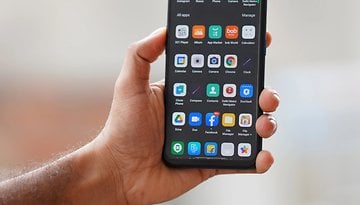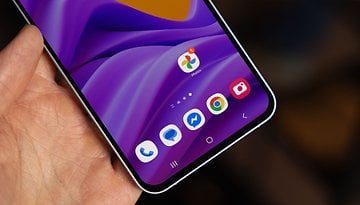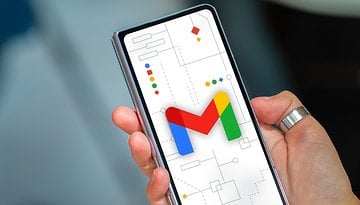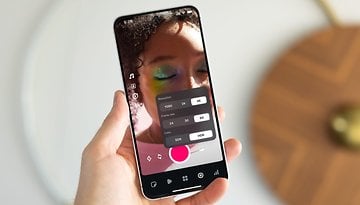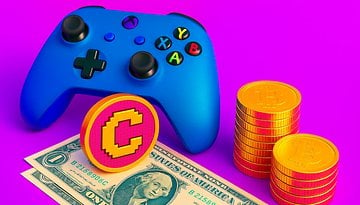Subscription-based apps interview: Is it a money pit?


In recent years, we have seen a steady, creeping change in apps: Instead of buying apps, people are in increasing number 'renting' them in the guise of subscription models. But where does this trend change actually stem from, what are the problems and possibly, the opportunities?
Just a few years ago, the pricing model for apps was transparent at first glance: There were free versions with limited functionality and a fully functional 'pro' version. Once purchased, that app was always ours. By now, pretty much every app has a subscription model, from weed scanners to digital Christmas cards.
- Also interesting: The best Andriod apps and the best iOS apps
We had an interesting conversation on this very topic the other day with Alexander Hauk, who is the spokesperson for technology company Smartfrog & Canary Group. Afterwards, we decided to condense the conversation into an interview format for you. As always, we look forward to your opinion on the subject.

NextPit: Apps based on a subscription model: Is this pure greed for money on the developer's part or are there other reasons behind this move?
Alexander Hauk: The fact that subscription offers and the associated business model, Software as a Service (SaaS), are on the rise, increasingly offered and often in demand, has several reasons and advantages behind it for both developers and users. First of all, from an entrepreneurial perspective, it has become easier to manufacture hardware in recent years. On one hand, this is great but it also means, in terms of potential competitive and market advantages, that hardware relevance has decreased.
The trend toward subscription offerings has been and continues to be reinforced by the technical possibilities, such as the expansion of fast Internet and certified data centres. The basic technologies required for this are so advanced and readily available that they can be applied in almost any industry. For software developers, the subscription model is perfect for customer retention method and is an important source of revenue, which helps ensure that apps can be developed further. The software incurs costs for developers during an ongoing operation, such as cloud storage or cloud computing power for complex editing of photos or videos. In addition, developers can integrate all system versions via subscription models.
Many app and software companies offer a free basic version with limited application options, and this is mostly sufficient for the majority of the users out there. Fitness apps are a good example. If you only want to record your runs as a workout, the free basic version is enough. Those who want extensive statistics about individual workout sessions can settle for a paid subscription.
The technology company Canary also offers two different service plans for its security cameras Canary Pro, Canary Flex and Canary View. For many users, the free basic version is sufficient, allowing them to see inside their own four walls at any time from any location via the mobile app, and to listen and speak thanks to two-way audio. Those who value additional features, such as access to video recordings of the past 30 days, human recognition, unlimited video download or desktop streaming, can choose the premium service for a monthly or annual fee.
N: Has anything changed in terms of users paying with their data?
A: Generally speaking, the issue of data protection has become much more important in recent years. Today, users have far more options when it comes to deciding which data developers have access to and how they use it. In Germany, data is protected by one of the strictest data protection laws in the world. The sometimes invoked free culture has never existed across the board on the Internet and has not been successful in the long term.
One of the generally known maxims of Internet economics is: If it costs you nothing, you are the product. In this respect, the development of various subscription plans and financing models by developers is logical, consistent and beneficial for both developers and users. It should also be mentioned in this context that user data is necessary to provide improved services and product functionality.
N: Do subscription models also offer users concrete advantages?
A: With a subscription offer, the costs are transparent for users. An app can be used immediately and often runs on multiple devices. This makes a subscription model ideal for users who want to test an app or software first. In the background, the app and software providers take care of updates, so users always have the latest version and thus, a better product. Since the software continues to generate revenue, developers have a great interest in the further development and improvement of their app. In practice, subscription models often provide a significantly wider range of functions.
Companies that rely on this payment model for the software they use have further advantages. With SaaS, software is centrally stored on a server system. This means that instead of buying software and installing it on a company's laptop or in its server room, users obtain the service via the Internet. The application is purchased on a monthly basis in a flexible subscription model. This allows a company to concentrate on its actual core business without being distracted. Thanks to transparent costs that can be planned on a monthly basis, the company always has an overview of the total cost of ownership with SaaS. And of course, there are also advantages for developers to offer subscription plans: They can always roll out new features in their respective apps thanks to a continuous income stream and constantly adapt them to new devices and OS versions.
N: What can users do to keep track of the subscription jungle?
A: First of all, from a developer's point of view: To be successful with their software, providers of software as a service should avoid complex subscription models. It is important that the subscription model is made as simple as possible. The simpler, the more likely potential customers will opt for it. In principle, the App Store and Play Store offer users a good overview of currently subscribed apps, at least if the subscription is handled directly by the app developer.
People who have difficulty meeting cancellation deadlines can set a reminder in their calendar or, if necessary, promptly cancel paid apps that are no longer used or required after a trial period.
N: Where is the trend heading?
A: It seems that users are willing to invest more and more money for apps and subscriptions. In 2021, a new record was achieved: according to the market research company Sensor Tower, subscription revenues for apps increased by 41 percent compared to the previous year. According to the report, developers earned $18.3 billion worldwide in 2021 from subscriptions alone. Subscription offerings and software as a service used to be just one part of the economy, but today software as a service is transforming the entire economy. The coronavirus pandemic has reinforced this trend.
But the overarching goal has not changed from a developer's perspective: If you want to succeed in the technology industry, your products and services have to make people's everyday lives more convenient, more efficient and, in the case of Canary, for instance, more secure. The willingness of users to pay is high if there is no free or cheaper alternative, even with subscription plans. An app is only used if it offers added value and benefits. Conclusion: A reversal of the trend is not to be expected, and developers can continue to expect higher revenues from subscriptions in the future.
N: Thank you very much for the interview!
And now we would like to know from you, our dear NextPit community: Which apps do you currently subscribe to? And what do you think about the trend of subscribing to apps instead of buying them? I'm looking forward to your opinion and experiences in the comments!







